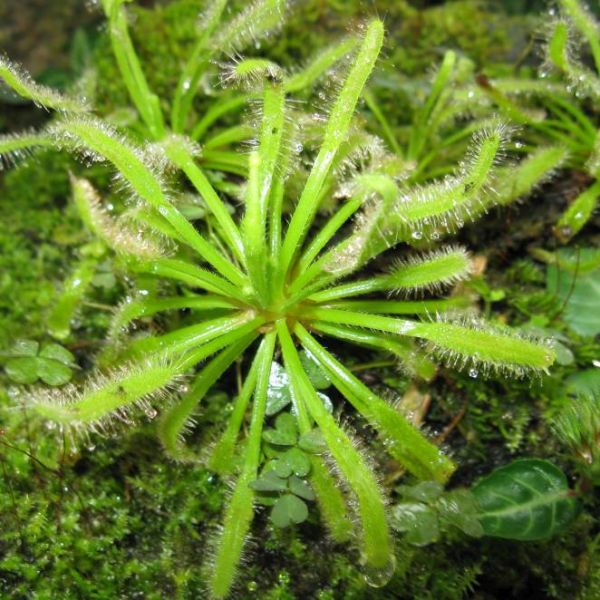Drosera Capensis Seeds (Cape Sundew)
Drosera Capensis Seeds (Cape Sundew)
Carnivorous plant with sticky leaves.

Delivery
All orders shipped with UPS Express.
Always free shipping for orders over US $250.
All orders are shipped with a UPS tracking number.
Returns
Items returned within 14 days of their original shipment date in same as new condition will be eligible for a full refund or store credit.
Refunds will be charged back to the original form of payment used for purchase.
Customer is responsible for shipping charges when making returns and shipping/handling fees of original purchase is non-refundable.
All sale items are final purchases.
Help
Give us a shout if you have any other questions and/or concerns.
Email: contact@domain.com
Phone: +1 (23) 456 789
Availability: In stock
SKU
Drosera Capensis
Drosera capensis, also known as Cape Sundew, is a fascinating carnivorous plant native to South Africa. It is admired for its long, slender leaves covered in sticky glandular hairs that trap and digest insects, providing essential nutrients in poor soils.
This plant typically grows up to 30 cm (1 foot) in height and spreads around 10 cm (4 inches). It produces delicate, pink to purple flowers that bloom in succession on tall stems, adding to its ornamental appeal.
Easy to cultivate, *Drosera capensis* thrives in moist, acidic soil and prefers bright, indirect light or full sun. It can be grown in pots or terrariums and is an excellent choice for beginner carnivorous plant enthusiasts.
With its unique insect-trapping mechanism and low-maintenance nature, *Drosera capensis* is a must-have for collectors and those interested in exotic plants.
| Label | Drosera capensis |
|---|---|
| Common name | Cape Sundew |
| Genus | Drosera |
| Species | Drosera capensis |
| Germination | The seeds require 6 weeks hot stratification. Sow directly on the surface of your moist but not soaked soil mix. Do not cover them with any medium, the seeds are really tiny. After hot stratification, somewhat uncover the top of the pot, so that moisture and heat drop a little. Place the pot in an area with real nice strong light and keep the temperature around 20øC/68øF. When you see some tiny plants starting to sprout, slowly open the top of the pot, a little each day, so that the new seedlings don't go into shock from the humidity being lowered too quickly. After hot stratification, germination usually occurs in 1-3 months, but it can be prolonged up to several months, depending on their degree of unbroken dormancy, don't give up. Be very gentle with the new seedlings, not to destroy anything, it is very tiny. Make sure that it gets good air circulation. |
| Scarification / Stratification | It creates a hot and moist environment for the seeds. This will break their dormancy. Place the seeds on top of a prepared soil mix. Put the pots with seeds in plastic ziplock bags under but not too close to florescent lights. A temperature around 25øC / 76øF works best. Make sure to check the seeds often. If fungus or mold appears treat it with a fungicide. |
| Price View | Price Range |

